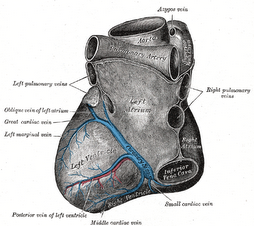
Background
Apical Hypertrophic Cardiomyopathy is a specific variant of Hypertrophic Cardiomyopathy. This disease has been first described in Japan by Yamagutchi where the prevalence is much higher than in the western world. It is characterized by hypertrophy that is confined to the apex which causes a ace of spades like configuration in RAO on the left ventriculogram.
EKG Characteristics
Giant negative T waves and tall R waves in the left precordial leads are the ECG hallmarks of the Japanese form of apical hypertrophy as seen on the EKG seen on the tracing above. Typically T waves in V4-V5 has the greatest degree of T wave depth possibly due to their proximity to the apex of the Left Ventricle which may result from the reversal in the direction of the vector of repolarization or myocardial ischemia due to hypoperfusion of the hypertrophied ventricle. Other findings on EKG include Left Atrial Enlargement, Right Atrial Enlargement, Left axis deviation, and First Degree AV Block.
See www.askdrwiki.com for more EKGs.





